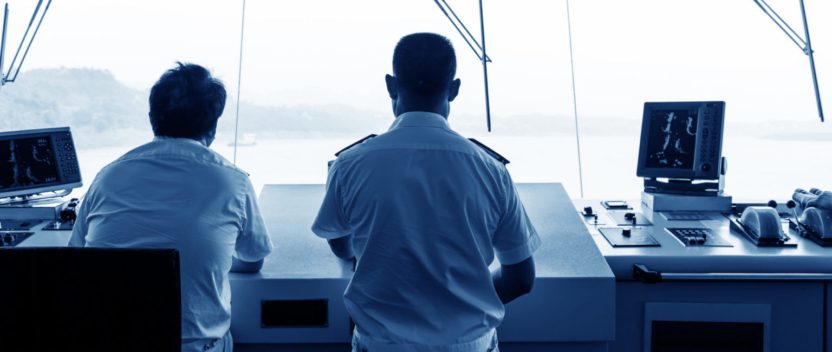Eye to the telescope? The shipowner’s view of e-Navigation
When John Murray of the International Chamber of Shipping delivered the keynote at the recent e-Navigation Revolution conference in London, he might have been expected to be cautious on the programme and the process.
The ICS has developed a reliable line in providing reasoned, measured advice to industry and regulators alike, working at all times from the owner’s perspective. It was the ICS for example, which insisted that hydrographic offices continue to make paper charts available for as long as owners require them even after ECDIS implementation deadlines.
Delegates hoping for a ringing endorsement of their work were thus to be disappointed as Murray spelled out the issues the ICS believes need further attention before the owners themselves give more attention to the subject.
It was, he said, ‘interesting and concerning that common sense on traditional navigation seems to have been challenged if not ditched’ by some proponents of e-Navigation, which was being touted in some quarters as a replacement for rather than an enhancement of today’s procedures.
Or put another way, is e-Navigation being developed to provide what the user actually needs or what the providers want to give?
There was, he said, a parallel to the problems experienced with life-saving appliances – problems which have ultimately proved fatal for some crew. Owners were told the faults lay at the industry’s door and that harmonisation or standardisation was impractical.
“This is simply wrong. Listen to what the user, the customer wants. Avoid providing only what you think they need and look at how e-Navigation can integrate into the industry,” he said. “Sometimes we might think that we’re being user-needs driven but are we considering the right users? Over 70% of the 624,000 officers in the fleet come from non-OECD countries, for example, the Far East, Indian subcontinent and Eastern Europe.”
Those formulating policy and practice on e-Navigation should ‘learn from mistakes that have undoubtedly been made so far with ECDIS’, he said, particularly since the IMO’s e-Navigation Correspondence Group is in a critical phase of its work. The focus of e-Navigation should remain very close to the IMO definition.
Chief among misunderstandings he said, was the belief that e-Navigation was conceived in order to develop new equipment, carriage or training requirements. If the shipping industry is to buy in to the concept, it must not be used as a hobby horse or even a cash cow and in the process, denying the bigger opportunity.
For owners working under an increasing weight of technology he said, standardisation, harmonisation and simplified updating are the key requirement. Claims from system providers and manufacturers that these aims ‘are not compatible with the provider’s own needs and is therefore a challenge’ would derail the process.
“It should not be beyond our capabilities to deliver on this and use the gain to our mutual advantage. For shipping there will be improved access to more up-to-date information, more co-ordinated information with improved user interfaces and less time spent in becoming familiar with equipment,” he said, adding that the IMO’s definition of e-Navigation includes a requirement for harmonisation in the presentation of marine information.
The fact that senior navigators still express comfort from having access to paper charts indicates a level of mistrust of ECDIS that must be addressed, as should the reported unreliability of some individual systems, he suggested. In order to move to a fully paperless environment, the industry needs the experience of seafarers to change, with greater reliability, robustness and more trust in e-Navigation and its support mechanisms than currently exists.
Speculating on where the industry might be in five years’ time suggested two potential extremes. The industry could experience a smooth progression to further ECDIS and e-Navigation implementation, with greater co-operation and mutual understanding between the shipping industry, manufacturing and its various supply networks.
“In the other extreme, we may possibly experience a catastrophic incident with significant loss of life and environmental damage where ECDIS or e-Navigation may have been identified as the clear and outstanding culprit,” he reasoned. “Apart from the direct fall-out from the incident the industry would be set back potentially for decades both in its development and in the public’s perception.”
New and unforeseen regulation would further weigh on shipping, making what is already an over-regulated but vital industry an almost impossible environment in which to operate both technically and commercially.
That need not come to pass of course, as long as the stakeholders keep their collective eye on the ball. The requirement was not that one new product be bundled with another, but rather that any new product or system address the real needs of the industry, supporting safety and environmental protection. And they should also be able to do that in a challenging cultural element where the human factors associated with navigation are understood.
The ICS looks for systems that both engage the navigator but also ease burdens and he said the body was concerned that too many navigators still look out of too few windows. He concluded with a plea for the IT providers to understand their place in the world.
The cost of meeting looming ballast water management regulations could easily amount to between one and five million dollars per ship, with an estimated cost to the industry perhaps as high as $100bn over the next 10 years. That’s to say nothing of the near doubling of fuel bills if owners choose to comply with sulphur regulations by switching to cleaner alternatives.
“It’s against this background that e-Navigation must be considered. One view is that the costs are insignificant and therefore don’t matter. The reality is quite different. Shipping operates in an increasingly cost sensitive environment and it is essential that reliable, robust systems are delivered at reasonable cost. If the move to the ‘digital ship’ contributes to unreasonable costs then the overall market for ECDIS and interest in e-Navigation will decline.”
Far better, he said for the e-Navigation’s protagonists to work with industry, under increased transparency so that costs are better understood and their justification can be seen by all and mutual trust established. “So far experience from a number of ship operators is that digital systems are nice to have, but have not yet been convincingly shown to increase safety or performance, despite increasing costs.”


